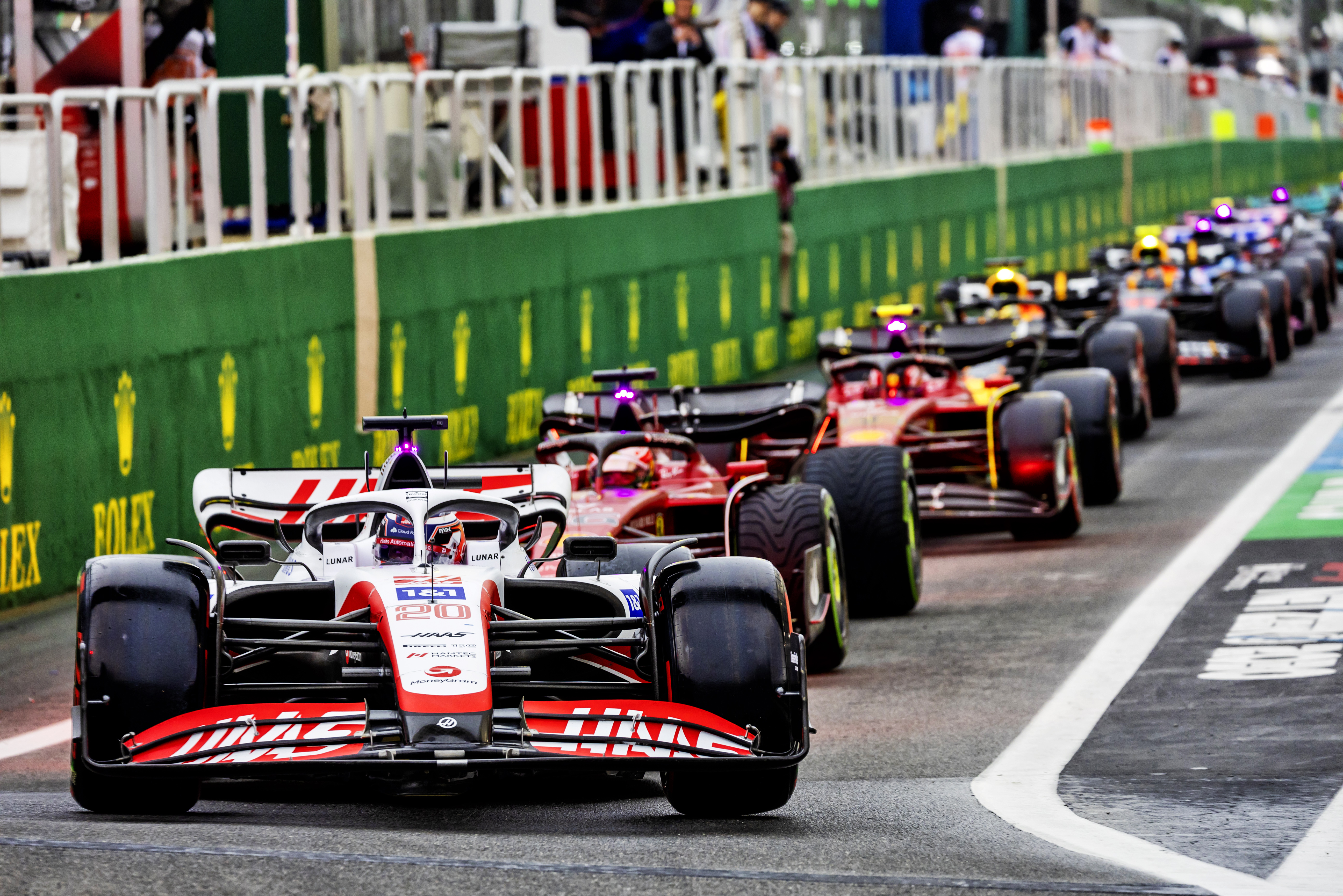Up Next

“I don’t know what to say,” said the gobsmacked Kevin Magnussen upon setting his career first pole position – and a first for the little Haas team too. “The team put me out on track at exactly the right moment, we were first out of the pitlane and did a pretty decent lap and pole. Incredible.”
There were a couple of key random factors contributing to the achievement: 1) the typically capricious Interlagos weather and how that gave the tiny window of opportunity right at the beginning of Q3. 2) Max Verstappen’s lock-up into Turn 8 on the only Q3 lap that mattered.
George Russell’s trip into the Turn 4 gravel came as Magnussen was completing his in-lap and there was a danger that the red flag and the freezing of the countdown clock would put Magnussen’s provisional pole in jeopardy because the rain had already begun falling quite heavily and without the red flag, he’d effectively already secured the position. Happily for him and Haas, the rain was even heavier by the time the session was restarted.
But all those factors combined would have meant nothing were it not for the quality of Magnussen’s lap (which was very characteristic of his wet weather form this year) and the sharpness of the Haas team in getting him to the front of the pitlane queue as the skies darkened.

Magnussen has got a great feel for a car in the wet and it’s no coincidence that his strongest qualifying positions prior to this were in the wet sessions of Imola (where he qualified a great fourth) and Montreal (where he was fifth). As recently as Singapore, the wet conditions saw him transcend the car’s natural level. Of the five wet qualifying sessions this year the only one in which he has not starred has been Silverstone, where both Haas cars went out in Q1, leaving him somewhat mystified at the time.
But actually there seems some logic to that anomaly because watching his Interlagos slicks-in-the-damp lap, it was his confidence under braking which shone. Just like at Imola, Montreal and Singapore, there is a whole chunk of lap time to be made under braking. Less so at Silverstone. It was apparent on his out-lap here as everyone was feeling out the grip, ready to launch straight into the first lap which always looked likely to be when the track would be at its quickest, with rain imminent.
Into the infield, in Turns 8 and 9 in particular, he was bold and confident on the left pedal, and the car was responding to him. Like the Ferrari, with which it shares its braking system, it looks like it can generate good front tyre temperature in cool conditions.
By contrast, Max Verstappen’s Red Bull looked a little more marginal for front grip, his lap certainly more dramatic and requiring more steering input and running wider and having more snaps over the damp exit kerbs, notably at Turn 4. But it was the hard braking zone into Turn 8 which he believes lost him the pole, the car’s outer front tyre locking momentarily, obliging him to release some pedal pressure and to extend the braking zone, running him way wide of the apex and giving him a very slow exit.
But even without that moment, he would likely still have been struggling to beat Magnussen’s time. Running two cars behind the Haas (once he’d cleared the inters-shod Charles Leclerc on the out-lap), the spray of drizzle was already appearing as he exited Turn 10 – by which time Magnussen was well on his way towards the start/finish line.

With everything so marginal and the window of opportunity so tiny, getting out first was a massive bonus for K-Mag, making his job of getting the tyres up to temperature far simpler than it would be for Verstappen – who first of all had to take it easy early in the lap trying to get a good gap to the Ferraris ahead, then having to pass Leclerc.
It wasn’t the ideal preparation. Magnussen’s was. The team was at the best end of the pitlane to be at the head of the queue, but it’s also been increasingly well-organised of late and Magnussen has been effusive in his praise of his race engineer, the highly experienced Mark Slade who joined only a few races ago.
There may be something else helping the Haas in the wet too, though it’s only a theory some in the team have. Its chassis is a three-piece one rather than the conventional two-piece. That shouldn’t matter, but perhaps it allows a little more flexibility under cornering, which can be helpful in wet conditions, giving the driver more feel and helping them to load the tyres more progressively.
If the sprint race is dry, Magnussen is obviously not expected to maintain position. But maybe it rains, then who knows? Besides, it’s only 24 laps…





